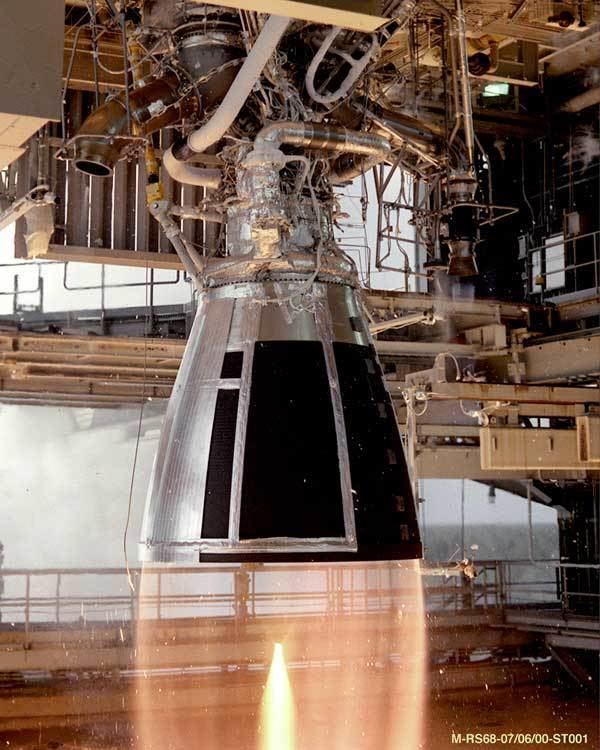Designer Yuzhnoye Design Bureau Application Second Stage Vernier | First flight April 13, 1985 Manufacturer Yuzhmash | |
 | ||
The RD-8 (Russian: РД-8 and GRAU Index: 11D513) is an Ukrainian liquid propellant rocket engine burning LOX and RG-1 (a rocket grade kerosene) in a oxidizer rich staged combustion cycle. It has a four combustion chambers that provide thrust vector control by gimbaling each of the nozzles in a single axis by +/- 33°. It was designed in Ukraine Republic of Soviet Union by Yuzhnoye Design Bureau as the vernier thruster of the Zenit (GRAU: 11K77) second stage. As such, it has always been paired with the RD-120 engine as main propulsion.
It can only be started once, and as a high altitude engine it has a thrust of 78.45 kN (17,640 lbf) and a specific impulse of 342 s (3.35 km/s). It is the first ever steering engine to use the staged combustion cycle, and as such is the basis for a family of planned engines for the Mayak launch vehicle family.
The engine itself is built like a hollow cylinder, with a cylindrical space in the center so the RD-120 nozzle can pass through.
Derivatives
While Yuzhnoye propulsion experience had been mostly on hypergolic propellants engines, like the RD-855 or RD-861, they are considered too toxic for current ecological standards. While they still offer to develop hypergolic propulsion, like in the case of the RD-843 for the Vega's AVUM stage or the Tsyklon-4 project, for the Mayak launch vehicle family a more environmentally friendly LOX and kerosene propellant was decided.
Not only had Yuzhnoye mastered the most complex cycle for the propellant (oxidizer rich staged combustion cycle) with the RD-8, but they had worked closely with NPO Energomash during the RD-120 program. The manufacturing is done at its sister company of Yuzhmash in Ukraine Republic of Soviet Union, and the RD-120 thrust augmentation project of 2001 to 2003 had been a mixed project between the three companies.
On the base of this experience, a family of derivatives engines were proposed. While the RD-801 and RD-810 are really just based on the general technology, the other members of the family are related enough that they reuse many components of the RD-8. One characteristic of this family is the limitation of keeping the preburner output temperature below 500 °C (932 °F).
